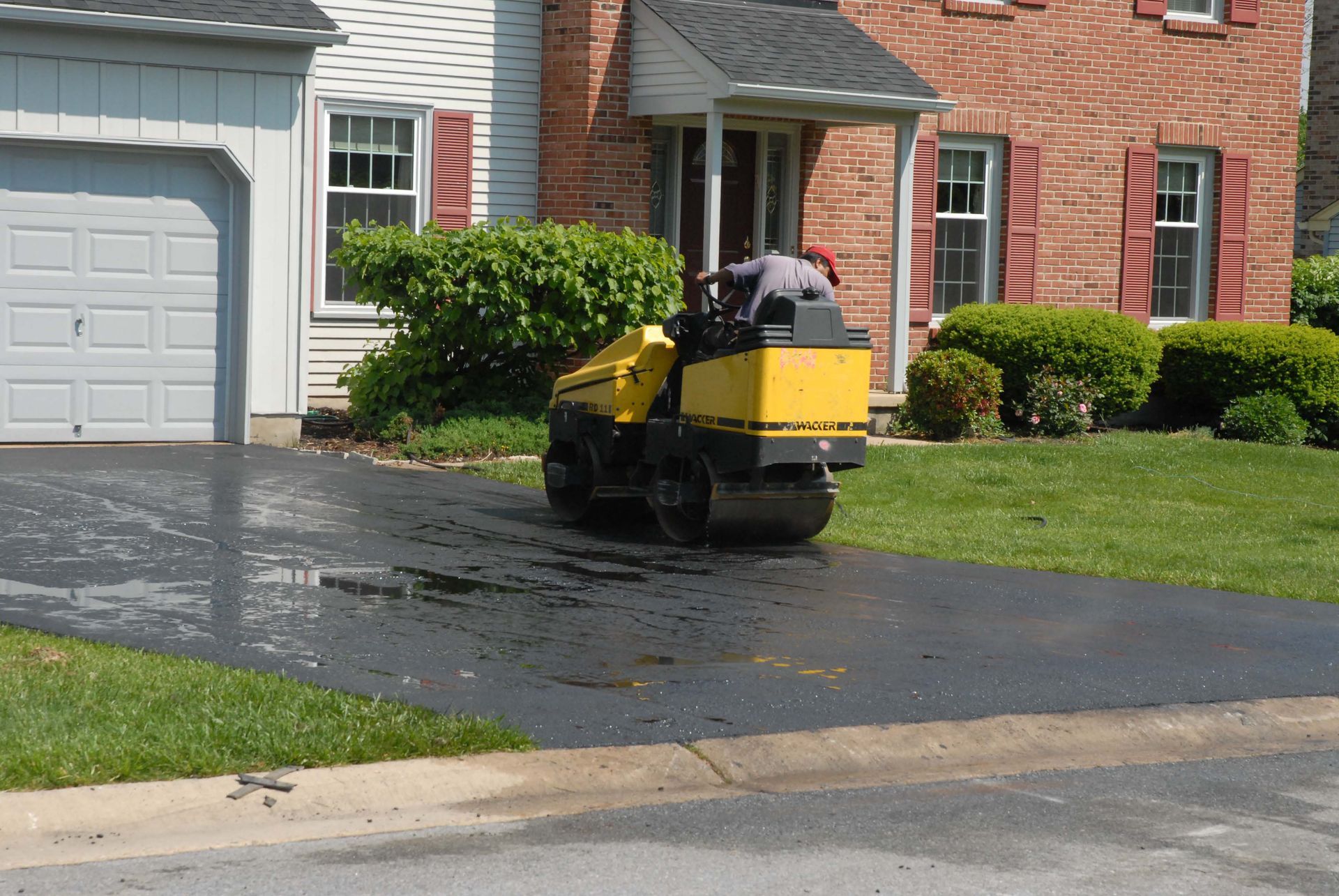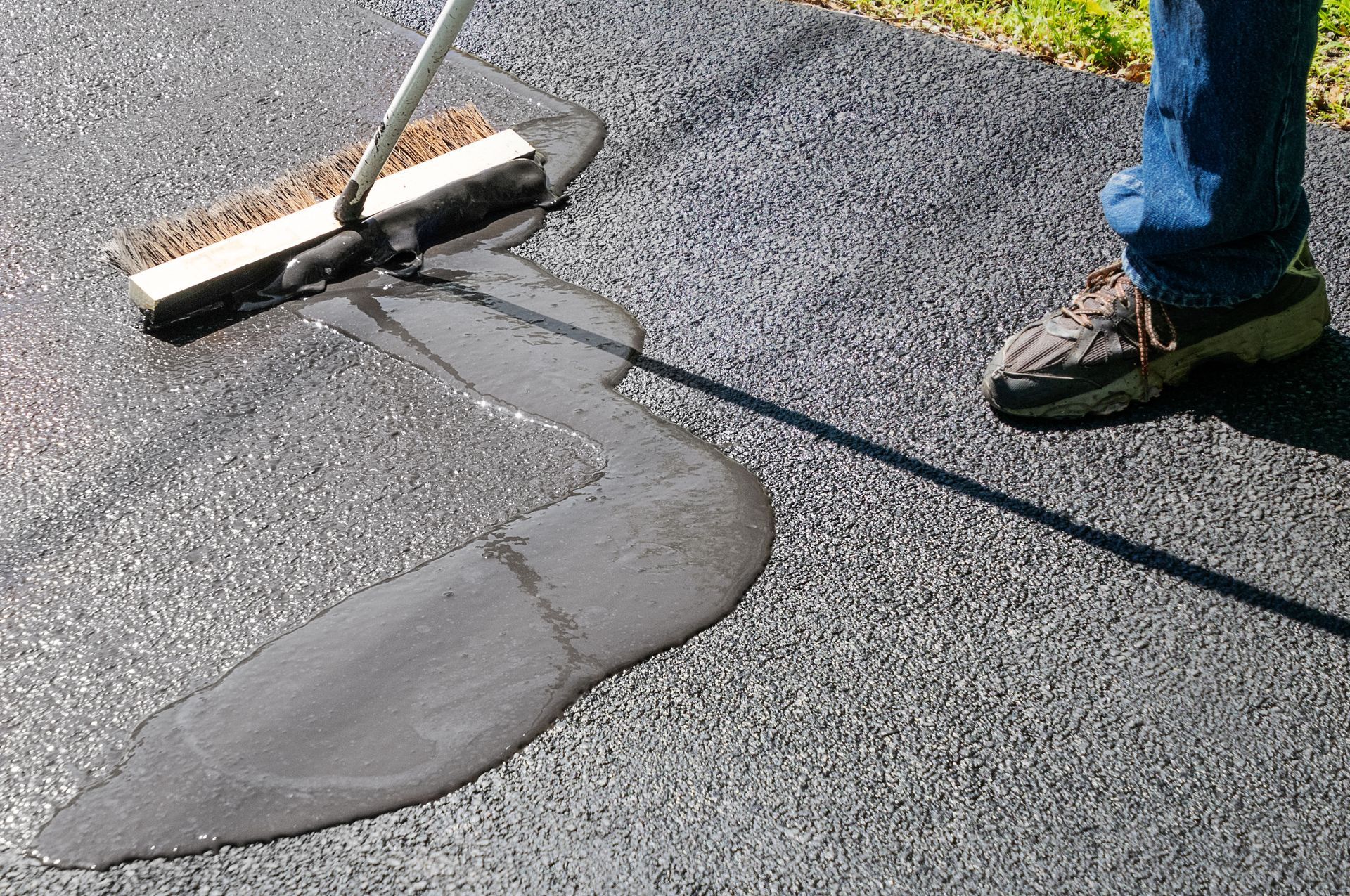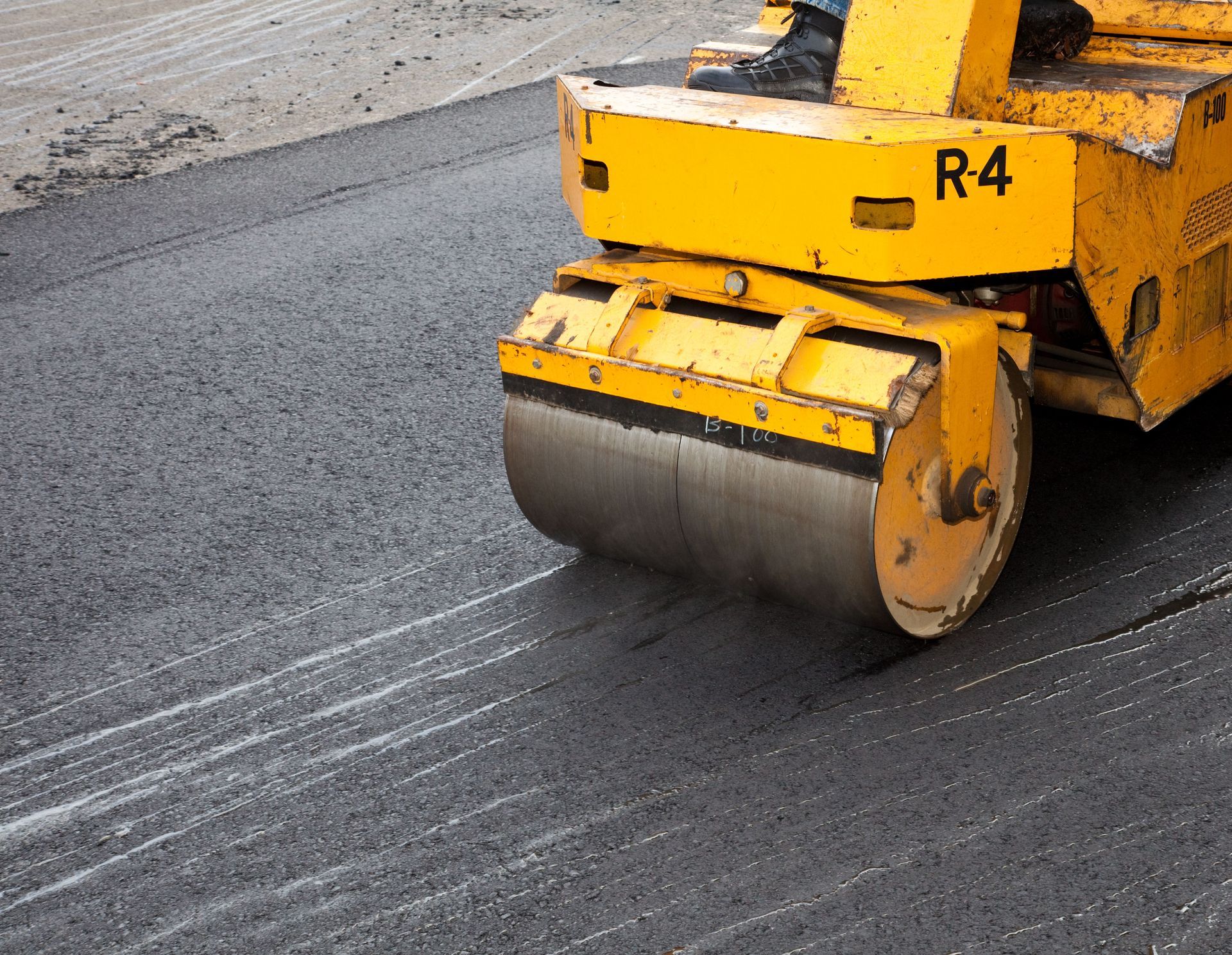Clearing Up 5 Common Misconceptions About Paving Services
Introduction
Paving services are essential for both residential and commercial properties, yet misconceptions often lead to confusion and poor decisions. This article aims to clear up common myths surrounding paving to provide clarity for anyone considering these services. With a plethora of materials and processes available, it's crucial to have an accurate understanding of what paving entails. Informed decisions can lead to better aesthetics, improved property functionality, and long-lasting results. By dispelling common misconceptions, this article will enhance your understanding of the complexities and benefits associated with paving services.
Misconception 1: All Paving Materials Are the Same
Understanding Different Types of Paving Materials
Many people wrongly believe that all paving materials provide the same benefits and have similar characteristics. However, a variety of materials are available, such as asphalt, concrete, bricks, and pavers, each offering unique advantages and disadvantages. Asphalt is known for its flexibility and resilience, while concrete provides a more rigid and durable surface. Brick can add aesthetic appeal to pathways and driveways, and pavers offer versatile design options. Recognizing these differences ensures you choose the right material for your specific needs.
The Impact of Material Choice on Durability
The choice of paving material significantly affects the longevity and durability of the paved surface. While some materials like concrete can last several decades, they require proper installation and maintenance to reach their potential lifespan. On the other hand, asphalt is praised for being the most recycled product in the United States at 80%, according to The National Asphalt Pavement Association, contributing to its sustainability and cost-effectiveness. Understanding these variations helps property owners make decisions consistent with their long-term goals. Proper material selection reduces the need for frequent repairs and lowers long-term maintenance costs.
Cost Variations Among Paving Materials
Misconceptions about cost often lead people to assume that all paving materials are priced equally. While initial costs are important, it's crucial to consider factors like longevity, maintenance, and aesthetic value. Asphalt and concrete generally provide a cost-effective option, but site preparation, thickness, and design can influence the total cost. Specialty materials such as brick and stone often come with higher upfront costs but can offer significant aesthetic value. A comprehensive cost analysis that considers long-term factors is essential for accurate budgeting.
Aesthetic Differences and Preferences
Aesthetic considerations are often a primary factor when choosing paving materials. Concrete offers versatility with a variety of finishes and colors, while bricks bring a classic look that can enhance traditional architecture. Pavers provide nearly limitless design possibilities, allowing homeowners to personalize their space. Each material has its stylistic attributes, and understanding these can enhance the visual appeal of your property. Mismatched or poorly chosen materials can detract from the desired look, so careful consideration is vital.
Sustainability Considerations
Sustainability is becoming an increasingly critical factor in selecting paving materials. Asphalt, being the most recycled material in America, offers significant ecological benefits by reducing waste and conserving natural resources. Permeable pavers are another sustainable choice, as they allow water drainage through the surface, reducing runoff and improving groundwater replenishment. Many manufacturers now offer eco-friendly options, such as recycled concrete and rubber, which provide additional environmental benefits. Making informed choices about sustainable materials can bolster your commitment to responsible living and construction.
Misconception 2: Paving Just Involves Laying Asphalt or Concrete
The Paving Process: A Step-by-Step Overview
Many believe that paving is simply the act of putting down asphalt or concrete, but the reality is far more complex. The paving process begins with comprehensive planning and design, ensuring that the layout meets both functional and aesthetic needs. Only after these initial steps can the actual laying of material happen, involving precise measurements and attention to weather conditions. Post-installation, several finishing tasks are conducted to ensure longevity and quality. Each stage in the process is crucial for producing durable, safe, and visually appealing results.
Importance of Site Preparation
Preparing the site is arguably one of the most critical steps in the paving process. Proper site preparation involves grading, leveling, and compacting the ground to provide a stable foundation for the paving material. This phase includes removing debris, leveling uneven areas, and ensuring proper drainage to prevent water accumulation and material deterioration. Oftentimes, neglecting site preparation leads to issues like sinking, cracking, and premature wear. Recognizing the significance of this step enhances the life and appearance of the paved surface.
Paving and Drainage Solutions
Effective drainage is a key consideration in the paving process, though often overlooked. Incorporating drainage solutions prevents water from pooling on the surface, thus reducing the risk of damage from freeze-thaw cycles and erosion. Various drainage options, such as grates, channels, and permeable materials, can be aligned with the overall design. Proper drainage solutions not only protect the surface but also contribute to environmental sustainability by reducing runoff. Including these in the paving plan can substantially increase the longevity and safety of the paved area.
Finishing Techniques and Their Importance
Once paving materials are laid, finishing techniques add the final touches that make a significant difference in appearance and longevity. These techniques range from sealing, texturing, and coloring, all of which enhance aesthetic appeal and offer protection against weather elements. Sealing, for example, acts as a protective layer that extends the life of the surface by preventing water penetration and UV damage. Adding textures can increase slip resistance, creating safer walking and driving surfaces. These techniques combine form with function, resulting in a superior paved surface.
Maintenance After Paving
Many people underestimate the requirement for ongoing maintenance after the initial paving is complete. Routine maintenance, such as cleaning, sealing, and minor repairs, prolongs the life of the paving material and maintains its appearance. Addressing small cracks and holes early prevents them from becoming significant issues, reducing long-term repair costs. Regular upkeep is crucial for high-traffic areas that are more susceptible to wear and tear. Scheduling periodic assessments helps identify potential problems before they escalate, ensuring the surface remains functional, safe, and visually pleasing.
Misconception 3: Paving Is a DIY-Friendly Job
Skills and Expertise Needed for Paving
DIY enthusiasts may be tempted to undertake paving projects on their own, underestimating the skills and expertise required for the task. Paving involves precise measurements, an understanding of material behavior under various conditions, and knowledge of local building codes. Proper installation techniques are essential to prevent premature deterioration, costly repairs, and safety hazards. Mistakes made during the paving process can lead to significant time and financial losses. Hiring skilled professionals ensures compliance with local standards and regulations, resulting in a durable and aesthetically pleasing surface.
The Risks of DIY Paving
Attempting DIY paving poses numerous risks that can outweigh the initial savings in labor costs. Without proper equipment and skills, it's challenging to achieve the same level of quality as professional installations, leading to potential structural problems over time. Even minor misjudgments in slope or drainage can cause issues like water pooling and surface cracking. Furthermore, faulty installation techniques can compromise the safety of the paved area. Engaging professionals ensures that your paving project is executed correctly, mitigating these risks and avoiding expensive rectifications.
Comparing Costs: DIY vs. Professional Paving
The allure of saving money often draws individuals to DIY paving projects, but professional paving often proves more cost-effective in the long run. While DIY projects exclude labor costs, they still require purchasing or renting specialized equipment and materials, which can be significant expenses. Additionally, professionals have access to high-quality materials at better rates and offer warranties for their work. Investing in experienced contractors prevents common mistakes, reducing the likelihood of frequent repairs and replacements. A comprehensive cost analysis often reveals that professional services deliver greater value over time.
Legal and Local Regulations
Legal and local regulations often govern paving projects, requiring permits and adherence to building codes for compliance. Unawareness of these requirements can lead to legal issues, fines, and the need to redo non-compliant work. Professional contractors understand these regulations, ensuring that all necessary permits are secured before starting any project. They also stay updated on changes in local laws, guaranteeing your project meets current standards. Compliance not only avoids legal troubles but also contributes to the safety and functionality of the paved area.
Evaluating the Value of Professional Contractors
Enlisting the services of professional contractors offers numerous advantages that extend beyond mere labor execution. Professionals bring experience, tools, and access to high-quality materials, ensuring the highest level of workmanship. They provide detailed assessments, helping you select the best materials and designs for your property. Moreover, professional contractors offer warranties for their work, giving you peace of mind and financial security. Their comprehensive services deliver a superior end result, maximizing both the functional and aesthetic value of your paved surface.
Misconception 4: Paving Services Are Overpriced
Breaking Down the Costs Involved
The notion that paving services are overpriced often stems from a lack of understanding of what goes into the pricing. Several factors contribute to the overall cost, including materials, labor, site preparation, equipment, and permits. Each component adds value to the project and ensures the final product meets safety and quality standards. In many cases, these costs reflect the complexity, skill, and time involved in delivering a durable, aesthetically pleasing outcome. Breaking down these elements reveals the comprehensive nature of professional services and their substantial benefits compared to potential shortcuts or inferior materials.
Factors That Influence Pricing
Numerous variables affect the cost of paving, often leading to price variations between projects. Material choices significantly influence costs, as does the quality and type of base preparation needed for different terrains. Additionally, site access, design customization, and project timeline requirements can alter pricing significantly. Professional services consider all these factors to provide precise estimates and transparent pricing structures. Comprehending these elements gives customers a clearer picture of where their money goes and assures them of the service and quality expected.
Quality vs. Cost: Finding the Right Balance
Balancing quality with cost is essential for achieving satisfactory paving outcomes. While opting for cheaper services or materials may seem convenient initially, this often leads to compromises on material quality or workmanship. This, in turn, results in frequent repairs, reduced lifespan, and increased long-term expenses. Investing in quality services secures a durable and aesthetically pleasing surface that enhances the property's value. Making informed decisions based on quality and value over cost alone aligns with long-term savings and functionality, demonstrating the true worth of professional paving services.
Long-Term Benefits and Cost Efficiency
The upfront costs of professional paving services often pale in comparison to their long-term benefits. High-quality installations performed by skilled professionals reduce the need for frequent repairs and extend the lifespan of the paved surface. These reduced maintenance efforts translate into cost savings over time while safeguarding the property's aesthetic appeal and functional value. Employing expert services ensures adherence to industry standards and best practices, providing peace of mind. When viewed in context, the cost efficiency of professional services becomes apparent, addressing misconceptions about initial price tags.
Tips for Getting an Accurate Estimate
Receiving an accurate and reliable estimate for paving requires clear communication and detailed assessments. Engage with multiple contractors to get varying opinions and quotes, ensuring you understand the scope, materials, and services included. Request breakdowns of all projected costs and confirm whether permits, site preparation, and finishing touches are covered. Additionally, contractors who offer free site visits can provide more precise estimates, tailored to your property's unique requirements. Following these steps ensures an informed decision, aligning expectations with both anticipated costs and desired outcomes.
Misconception 5: Paving Only Involves New Installations
The Role of Maintenance in Paving Services
Maintenance is a vital component of paving services, ensuring surfaces remain functional and visually appealing over time. Proper maintenance extends the lifespan of existing pavements, delaying the need for complete replacements. Routine actions like cleaning, sealing, crack filling, and surface assessments identify minor issues early, preventing costly repairs. Regular upkeep decisions impact both safety and aesthetics, keeping surfaces in optimal condition. Developing a maintenance plan with professionals can safeguard your investment and preserve the quality of your paved areas.
Repairing vs. Replacing Old Pavements
Deciding whether to repair or replace old pavements depends on numerous factors, including material condition, age, and underlying issues. Repairs are often ideal for superficial damages or specific problem areas, offering cost-effective solutions that extend the surface's life. In contrast, extensive damage, foundational problems, or long-term wear may necessitate full replacement for safety and performance. Consulting with professionals enables informed decisions based on thorough assessments and tailored recommendations. Understanding the differences allows for strategic approaches to managing surfaces cost-effectively and sustainably.
Resurfacing as an Alternative Option
Resurfacing presents an appealing alternative to full replacements, especially when the surface base remains structurally sound. It involves adding a new layer of material on top of the existing one, upgrading the appearance and extending functionality. This option is typically more affordable and quicker than complete repaving, suitable for addressing minor deterioration or aesthetic updates. Resurfacing not only refreshes the look but also reinforces the surface, enhancing safety and durability. Recognizing its benefits maximizes both the visual appeal and practical value of paved areas without significant costs.
Lifespan Extension Through Proper Care
Proper care and maintenance significantly extend the lifespan of paved surfaces, delivering substantial cost savings and reliability. Regular inspections, cleaning, sealing, and repairs form the foundation of effective care strategies that mitigate wear and tear. Proactive measures ensure small cracks and flaws are addressed before they escalate, preventing larger structural issues. Furthermore, adequate drainage management and protection against environmental elements contribute to maximizing lifespan. With the right care approach, paved surfaces enjoy enhanced functionality and aesthetic value, translating into longer-term value for property owners.
Innovations in Paving Renovations
Paving renovations have seen impressive innovations that offer a range of benefits, from enhanced durability to eco-friendly solutions. Advanced materials like recycled asphalt and engineered composites provide sustainable, high-performance options ideal for modern construction goals. Green technologies allow for effective drainage systems and increased energy efficiency, appealing to environmentally conscious property owners. Design enhancements and digital tools support customized renovations that achieve ambitious stylistic vision and optimized functionality. Embracing these innovations elevates the potential and impact of paving services, delivering superior outcomes for clients poised to adopt advanced solutions.
Conclusion
By dispelling these common misconceptions about paving services, individuals can make more informed decisions that not only preserve their investment but also enhance the aesthetics and functionality of their properties. Understanding the complexities and expertise involved in paving ensures appreciation for the quality and value these services provide. High-quality paving incorporates various materials and processes that contribute to a durable, attractive, and sustainable surface. Whether for new installations, maintenance, or renovations, professional paving services reliably deliver exceptional results. Allow Rhode Island Paveway Inc to help you make informed choices for effective, efficient, and satisfying outcomes!




Share On: